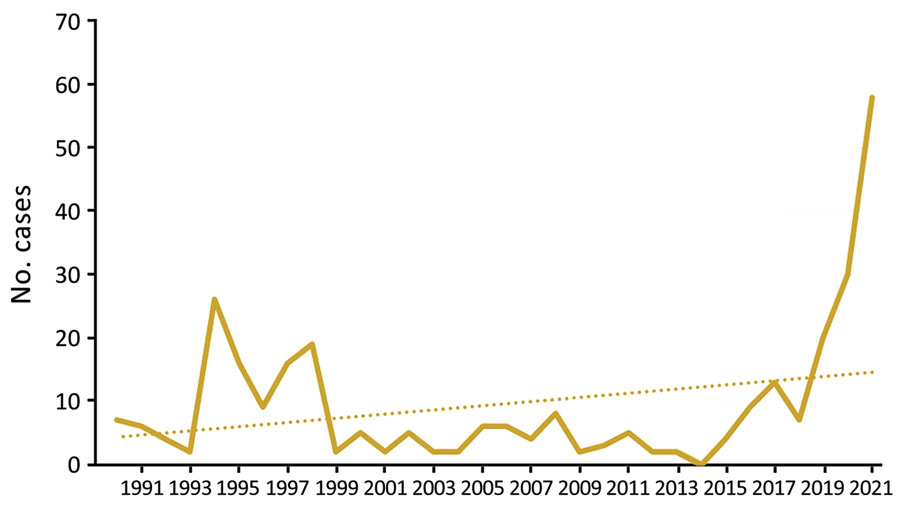Volume 29, Number 11—November 2023
Dispatch
Three Cases of Tickborne Francisella tularensis Infection, Austria, 2022
Figure 1

Figure 1. Reported cases (solid line) and trends (dotted line) of tularaemia in Austria, 1990–2021. Data from the Austrian Epidemiologic Reporting System (https://oecd-opsi.org).
1These senior authors contributed equally to this article.
Page created: September 28, 2023
Page updated: October 23, 2023
Page reviewed: October 23, 2023
The conclusions, findings, and opinions expressed by authors contributing to this journal do not necessarily reflect the official position of the U.S. Department of Health and Human Services, the Public Health Service, the Centers for Disease Control and Prevention, or the authors' affiliated institutions. Use of trade names is for identification only and does not imply endorsement by any of the groups named above.